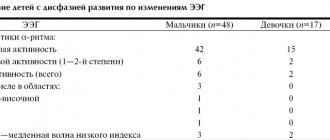A person perceives information through the main five channels: visual, auditory, tactile, gustatory, olfactory. And after perception, the information is processed in our head, and the interesting thing is that it is processed on the basis of one prevailing system .
There are four main types of sensory systems:
- Visual. When the visual information processing system is dominant: shape, location, color.
- Auditory. The auditory information processing system is dominant: sounds, melodies, their tone, volume, timbre, purity
- Kinesthetic. Sensory information is dominant: touch, taste, smell, sensation of textures, temperature
- Digital. Associated with the logical construction of internal dialogue.
One should not think that the dominance of one means the weakness of the other. It’s just that one of the systems is most often the starting, leading one. It is the leading system that launches the thinking process and becomes the impetus for other mental processes: memory, representation, imagination.
How can you determine who you are: visual, auditory, kinaesthetic or digital by speech?
Carefully monitor your speech and write down exactly the phrases that you use to indicate your opinion and your actions. Most often, a person of a particular type of perception uses phrases characteristic of this modality.
Visual
Uses words and phrases related to visual actions : I didn't see, I saw, I noticed, I think it was colorful and great, it looks, focus is concentrated, contrast, perspective, you see.
Audial
They often use phrases with auditory phrases : I can’t understand what you’re saying; didn't hear; I heard it; I recently heard; glad to hear from you; I heard it; the idea sounds tempting.
Kinesthetic
This type of perception is characterized by phrases that show their emotional and bodily responses: I can’t stand it; it's disgusting; it is so sweet; goosebumps; so pleasantly warm; it was a powerful experience. Often their nonverbal signs are very indicative; facial expressions and gestures are telling and reflect the state and emotions of a person, even if there are not many nonverbal signs themselves.
Digital
Digitals pay attention to logic and connections. A specific set of words is not typical for them: phrases of auditory and kinesthetic types may appear. Digital people often ask: what is the point of this; I don’t understand how this is connected; I would like to bring everything into a system; we need to streamline this somehow. However, such expressions are typical of most types with a good sense of organization. Therefore, identifying digital from speech must be done with great care.
Each type has its own characteristics that affect its perception of surrounding information, any educational processes, and interaction with other people. Let us analyze the characteristics of people of different types of perception.
Who is a visual
A visual person is a psychotype of a person who prefers to get acquainted with the world around him through visual receptors and attaches great importance to the appearance of a phenomenon (Efremova’s explanatory dictionary).
Visual is a type of information perception. People imagine the world through visual images, which means they easily describe what they see and are amazing storytellers. Visual people will not miss the opportunity to daydream, but at the same time they know how to clearly build strategies and plans of action, and not indulge in empty pastime.
Basic representational systems
Channels of information perception were studied by representatives of neurolinguistic programming. Different ways of perception allowed psycholinguists to classify people into psychotypes. This is how auditory, digital, kinesthetic and visual learners appeared. Of course, such a classification is very arbitrary, but a basic understanding of how perception channels influence human behavior makes it easier to interact with him.
The main organ of perception of information about the world for the visual
The types of perception in people are determined depending on the dominance of one or another analytical system. In psychology, the main types of perception are considered to be:
- Auditory type of perception (a person receives basic information about the world around him through the auditory canal). Auditory learners remember voices well and understand musical genres. In their speech, such people often use verbs related to hearing and speech: “I was told...”, “I recently heard...”, “this sounds strange...”
- Visual type of perception (most of the information about the surrounding world is acquired through vision). People of this type have well-developed memory for faces, color perception, and spatial orientation. A visual person knows how to notice interesting features of the landscape. He will also certainly notice his colleague’s new hairstyle.
- A discrete type of perception, which includes digital people. Unlike visual, auditory and kinesthetic learners, all channels of information perception for a representative of this representative system work approximately the same. But all incoming information is processed logically by digital devices.
- Kinesthetic type of perception, based on tactile sensations perceived in the process of interaction with the outside world. They remember which of their friends has cold palms and which ones clench their palm tightly when shaking hands. They associate friends and acquaintances with a certain scent of perfume. This type of perception is characterized by increased work of taste, olfactory and tactile receptors.
If desired, a person can consciously stimulate the work of one or another channel of information perception, despite the fact that the predominance of one or another method of processing information in an individual is innate.
How to recognize a visual person - appearance
It is quite difficult to confuse a visual person with another type of perception. First of all, you should pay attention to the person’s appearance.
| Characteristic. | An example from life. |
| Beautiful, stylish, tastefully selected clothes. | Visual people care about appearance, so they choose only beautiful clothes and shoes. Often their clothes are uncomfortable and impractical, but they look very advantageous. Visual artists cleverly emphasize the advantages of their figure and also skillfully hide their shortcomings. |
| Accuracy in everything. | The hair is styled perfectly, the makeup is neat, there are no stains, dust particles or folds on the clothes, the shoes are polished to a shine. The visual worker has perfect order in his workplace. |
| Straight posture. | Even if the visual is tired, has experienced stress or a hard work shift, his posture is straight and he will not allow himself to hunch over. |
| Expressive facial expressions and gestures. | Their eyes are open wide, their facial expressions are very bright, their gestures are appropriate and energetic. Any actor or comedian would envy such abilities. |
| The ability to tell stories. | Visual learners are considered the best and most interesting storytellers, since they constantly keep a picture of what is happening before their eyes and are able to describe it. |
| The importance of the interlocutor. | It is important for visual learners what the interlocutor thinks about them, therefore, during the process of telling a story, they constantly look up at him and try to see approval and a positive mood in the person’s facial expressions. |
Not everyone has time to take care of their appearance, and some shortcomings can spoil the mood and constrain them. And this will be noticeable; the person may be tense.
Psychological picture
Visual people also have psychological characteristics and habits that distinguish them from other people:
- They can become so focused on the appearance of the interlocutor that they completely forget the essence of the conversation.
- During a conversation with a person, the visual person tries to position himself opposite him so that he can look into the person’s eyes. But the visual will not violate someone else's personal space.
- Word forms such as “I saw”, “Look” and similar ones are often used in speech.
- They avoid telephone calls, as it is important for them to see the other person. During video calls, a camera is always used.
- They easily remember a person’s appearance and details of his clothing, but forget other important information (name, surname, position, essence of the issue).
- Often cannot sit still, looking at one point. The visual person constantly needs new visual impressions and objects to look at.
- When listening to a text or a story about any life situation, the visual reader involuntarily imagines it.
- When arranging a house, apartment or workplace, visual gives preference to external attractiveness. You can find a lot of beautiful, but useless things in everyday life.
- They often find fault with little things. For example, if you serve a visual person an exquisite dish on an ugly, shabby plate, he will refuse to eat. But if you offer the most ordinary porridge in a beautiful bowl, he will accept the treat with pleasure.
- The easiest way to recognize a visual student among students or schoolchildren is to just look at their notes. Visuals do not write “on canvas”; information is recorded in the form of plates, diagrams, graphs, definitions and terms are highlighted in a different color.
Are there any visual people among your friends? How do they behave? Tell us about it in the comments.
What is the type of perception?
The first thoughts about the peculiarities of perception are found in the works of ancient philosophers. Around the 6th century. BC e. thinkers began to notice differences in their students' perceptions and write down their observations. These differences were interpreted in different ways, but a start had been made.
It should be noted that until the 18th century. a person was considered by scientists as a part of society, which is understandable and logical. The approach to the study of personality psychology and the development of a theory that began to allow for the principle of personal benefit in a person and the assessment of all phenomena based on their usefulness and acceptance by an individual, from the psychologists Bentham and Smith. This moment became a turning point and finally turned the views of scientists in the right direction.
In the 19th–20th centuries. The period of development of social psychology began. Researchers began conducting laboratory experiments for the first time. It was this period that gave a clear understanding of the differences in people's perceptions. Tests were created whose purpose was to determine the way a person perceives information. Now a whole science called “Socionics” is studying these subtleties.
What benefits can you get for yourself - the advantages of the type
Visual learners are often successful academically and professionally because they can:
remember large amounts of information, using visual memory (an invaluable quality if you need to prepare for a session or certification at work);
skillfully navigate the area, armed with a map or electronic application, they will not get lost even in an unfamiliar city, and will quickly find the desired object or organization;
are able to understand drawings, complex diagrams and diagrams;
if desired, thanks to their rich imagination, they can develop artistic skills and learn to draw well, because a visual person sees the world in artistic images;
Their aesthetic taste and impeccable appearance can be envied, so the visual is in the spotlight.
Types of perception channels and how to work with them
Audials
There are many music fans among audio audiences
These kids love to listen. There are many music fans among audiophiles; they prefer audio books. If you see that during a lesson a child repeats after you, pronounces a new rule, or mumbles, it means that you have a typical auditory learner.
Auditory learners are easy to recognize by their speech: they speak measuredly, rhythmically, often nodding in time with the tempo of their speech. If such a child retells the content of a film or book, get ready to listen to all the details with a verbatim reproduction of the characters’ lines. This flow cannot be stopped with the words: “Everything is clear, move on!” If you interrupt the auditory speaker, he will lose the thread of the conversation.
Auditory learners often have a melodic voice. In an unfamiliar company, they quickly make friends and become leaders.
It is believed that about 5% of people are auditory. Read more: How to distinguish an auditory child.
Work and profession
Visual people can try their hand at activities.
| Profession. | Why is it suitable for visual learners? |
| Architect. | Thanks to his exquisite taste and ability to understand complex diagrams and drawings, a specialist will be able to show his best side. |
| Fashion designer, stylist. | If a person knows how to see beauty and wants to create it himself, then he deserves to become a fashion designer. And for those who do not have enough skills and imagination to create their own clothing line, you can select ready-made sets while working as a stylist. |
| Colorist. | A very popular specialty for people with color vision. |
| Painter. | If you are a visual artist and don’t want to spend a lot of time on training, then you should try yourself as a painter, because not everyone can become a good painter. And in the future, after gaining experience, the painter can retrain as a decorator. |
| Animator. | The ability to imagine details and a well-developed imagination will help a visual artist become a cartoonist. |
| Photographer, designer of social network pages. | A visual photographer will be able to see beauty and capture moments in time. Nowadays, creating a “visual” for a social network page and designing an eternal feed on Instagram are in demand. |
| Technical specialties. | A visual person with a less developed sense of beauty can try to become a designer, technician or engineer; the ability to keep a large amount of information in his head and work with drawings will only benefit him. |
| Interior designer. | Another specialization option for people with a developed aesthetic sense. |
| Beauty master. | A visual artist can also find himself in the profession of a hairdresser, creating beautiful haircuts, hairstyles or fashionable color dyeing. Nail specialists, pedicurists, eyelash extension specialists, and makeup artists are in great demand. |
Relationships with the visual
When building a romantic relationship with a visual person, it is important to remember the details. Visual people evaluate the image of the other half, but one detail can ruin the whole impression.
For example, if a girl came on a date with makeup, hairstyle, stylish clothes and shoes, but the visual guy noticed a stale, month-old manicure, then this can really ruin the impression. Likewise, a visual girl will be able to draw disappointing conclusions about her partner if his home is a mess, mountains of crumbs and unwashed dishes. On this basis, the couple may begin to quarrel and misunderstandings may arise.
The possibility of such situations should be taken into account. There is no need to try to adapt to the visual every second. If you feel tension in communication, you should talk frankly and discuss everything.
When building a relationship with a visual person, it is important to remember that touches, hugs and beautiful words are not particularly important to him. The best expression of love is giving aesthetically pleasing gifts.
When communicating, you need to use short and concise phrases, and understand once and for all that visual people do not understand hints. They need to speak directly about their desires.
In family life with a visual person, you need to be prepared for the fact that intimacy is a rare occurrence. It is much more pleasant for a visual person to walk around the city, and if his partner offers him a weekend trip, then the visual person will be happy.
Have you ever built a relationship with a visual person? Are there life hacks for successful communication in marriage? Tell us about your experience in the comments.
How to communicate correctly with a visual person
You can establish interesting communication with a visual person, because he is an excellent conversationalist and a sincere storyteller, the only important thing is:
- Learn to maintain eye contact with a visual person.
- If there is a need to prove something to a visual person or teach something, then you need to use visual examples, images and materials.
- Statistics, “dry” and boring facts and similar information are best presented in the form of tables, diagrams, diagrams.
- If a person wants to impress a visual boss at an interview or conclude a profitable deal with a visual person, then they will have to take care of their appearance very carefully.
- Maintain a distance of 1-1.5 meters, do not violate a person’s personal space.
Visual child - features of education and training
If parents understand that their child is a visual learner, then it is necessary:
- Broadcast only the correct model of behavior from a moral and social point of view. Don't forget that visual learners are observant. If a child sees that his parents, for example, teach him to always clean up after himself, but do not do this themselves, then the educational process will not be successful.
- Cultivate tact and politeness in your child. As a rule, visual people are fixated on their own and others' appearance. It is important to stop your child’s attempts to speak disrespectfully about people who are dressed sloppy or dirty.
- A child’s fixation on appearance can develop into narcissism, so it is important to unobtrusively switch his attention to other activities, games, and entertainment.
- Children with a visual personality type are often addicted to computer games and gadgets. It is important to prevent your hobby from developing into Internet addiction. As an alternative, you can offer crosswords, puzzles, coloring books, paint-by-number paintings, and other creativity kits.
When parents help a child do his homework or teachers engage in educational activities with him, it is important to provide them with visual materials and aids (accompanying illustrations, signs, diagrams). This will help the visual learner to better assimilate the material.
Simply talking about the phenomenon being studied will not be enough. Illustrations and visual materials are a mandatory minimum, but if the teacher has the opportunity to include educational films, demonstrate experiments or simulate situations, then visual learners will learn the material much better.
What difficulties might parents of a visual teenager encounter?
In adolescence, visual children have a hard time experiencing imperfections in their own appearance (teenage acne, weight fluctuations, awkwardness, unformed figures in places). It is important for parents to provide the child with the necessary support and under no circumstances make fun of him, even in a loving and kind manner.
What should a teacher do if a visual student is often distracted in class?
Visual children are often distracted by external stimuli. There is no point in removing them, because the child may simply begin to dream and fantasize in his head. The teacher’s goal is to teach the material in a very lively and interesting way, often change the type of activity the child is doing, and involve him as much as possible in the process of learning new things (offering days of self-government, allowing the student to explain something new to the class, giving creative tasks).
How to find an approach to a visual client
If a person has a need to collaborate with a visual client, then he will need to take into account:
- There is no need to rush the client. To make a final decision on purchase, contract or lease, a person needs to carefully examine and think about everything.
- If a person frowns, hunches over, or stands in a closed position, this can scare away the visual client. It is better to smile, behave kindly, and make eye contact.
- Visuals pay great attention to packaging, so it should be designed creatively.
- It is difficult for a visual person to perceive information by ear; it is better to immediately prepare a printed version for him.










